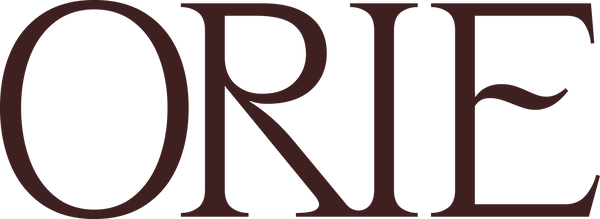
Menstrual Health

Amenorrhea
Amenorrhea is the absence of menstruation, often defined as missing one or more menstrual periods. Amenorrhea can be:
• Primary – refers to the absence of menstruation in an individual who has not had a menstrual period by age 15. The most common causes of primary amenorrhea relate to hormone levels, although anatomical problems also can cause amenorrhea
• Secondary – refers to the absence of three or more periods in a row by an individual who has had a menstrual period in the past. Pregnancy is the most common cause of secondary amenorrhea, although problems with hormones also can cause secondary amenorrhea.
Treatment of amenorrhea depends on the underlying cause.
PMS
Premenstrual syndrome (PMS) is characterised by a wide range of symptoms including mood swings, tender breasts, food cravings, fatigue, irritability and headaches that may occur in the lead up to a woman’s menstrual period. There are several different types of PMS:
• PMS-A (anxiety) – linked to high oestrogen and low progesterone levels, and characterised by anxiety, mood swings, irritability & nervous tension
• PMS-C (craving) – characterised by cravings, increased appetite, dizziness, headaches & fatigue
• PMS-D (depression) – characterised by depression, crying, poor cognitive function & insomnia
• PMS-H (hyperhydration) – characterised by fluid retention, weight gain, swollen extremities, breast tenderness & abdominal bloating
• PMS-P (pain) – characterised by menstrual pain
PMDD
Premenstrual dysphoric disorder (PMDD) is a severe, often debilitating extension of premenstrual syndrome (PMS), that causes extreme mood shifts
PCOS
PCOS, or Polycystic Ovarian Syndrome, is a term used to describe a range of symptoms such as anovulation (lack of ovulation), an irregular menstrual cycle, excess androgen activity & polycystic ovaries (identified by ultrasound). Clinical features include acne, excessive facial hair, menstrual irregularities, infertility, weight gain, anxiety, and depression.
PCOS can be difficult to diagnose due to varying symptoms, as well as constant changes in testing and diagnostic guidelines, however it cannot be diagnosed by ultrasound alone.
There are four types of PCOS, that are characterised by different symptoms and pathology. Identifying the correct type of PCOS is important in order to inform treatment. The four types of PCOS include:
• Insulin resistance PCOS
• Adrenal PCOS
• Post-pill PCOS
• Inflammatory PCOS
Insulin Resistant PCOS:
This type of PCOS is characterised by elevated insulin levels, which then increase androgen levels. As a result, insulin resistant PCOS can present with symptoms of androgen excess such as weight gain, acne, dark hair growth, fatigue and sugar cravings.
A primary focus of addressing insulin resistant PCOS is stabilising blood sugar levels and reducing insulin.
Post-Pill PCOS:
Post-pill PCOS occurs when transitioning off the oral contraceptive pill as a result of a surge in androgens that were previously suppressed while on the pill. This type of PCOS is temporary, and generally lasts for 3-6 months after cessation of the pill. Post-pill PCOS is typically characterised by irregular or absent menstrual cycle, acne & dark hair growth.
Inflammatory PCOS:
Inflammatory PCOS leads to hyperstimulation of the ovaries, which results in an overproduction of testosterone. Common symptoms of inflammatory PCOS include headaches, joint pain, fatigue, skin complaints and bowel changes alongside an irregular menstrual cycle.
Adrenal PCOS:
Adrenal PCOS is characterised by elevated DHEAS alongside normal testosterone and androstenedione levels on a blood test. Adrenal PCOS is fairly uncommon, and accounts for only 10% of PCOS cases. It is generally a result of an impaired stress response.
Endometriosis
Endometriosis is a condition that occurs when the uterine lining tissue grows outside of the uterus. Symptoms are variable, which may contribute to the 7 to 12 year delay in diagnosis, but are often debilitating and have a significant impact on the quality of life of the individual.
Endometriosis is more than just a reproductive disorder, it involves the immune system, gut microbiome and nervous system and must be treated accordingly.
Common symptoms of endometriosis include:
• Painful periods: pelvic pain and cramping, lower back and abdominal pain
• Pelvic pain and cramping unrelated to menstruation
• Pain with bowel movements
• Excessive bleeding
• Infertility
• Digestive symptoms: constipation, diarrhoea, bloating & nausea
• Pain with intercourse
• Fatigue
Adenomyosis
Adenomyosis is a gynaecologic condition that causes endometrial tissue in the lining of the uterus to grow into the muscular wall of the uterus

Living In Alignment With Your Cycle
Understanding your unique menstrual cycle empowers you to better care for your body and overall wellbeing. It also allows you to anticipate changes, track patterns and make informed decisions about your health, contraception and reproductive goals.
There are 4 distinct phases of the menstrual cycle, which can be likened to the seasons. These different phases encompass different physical fluctuations, therefore it can be useful to be mindful of which phase you are in and employ various diet and lifestyle changes to best support your body through that phase.
It’s important to mention that each woman’s cycle length will vary, with a normal cycle falling anywhere between 21 and 35 days in length, that is from day 1 of your period to day 1 of the following period. Although the model we will discuss is based on a 28 day cycle, the 4 phases still apply to cycle that differ in length, the timing and duration of each phase may just be different. To determine what phase you are in, it is useful to get to know the symptoms of each phase, or begin to track your cycle.
Menstruation – Day 1- 5 – Winter
The first day of your bleed signifies the start of your cycle, and the beginning of the menstruation phase. During this time our hormones oestrogen and progesterone drop in order to allow the endometrium to shed and pass through the vagina.
We want to focus on slowing down and turning inward during this phase, giving your body the slowness and rest it is craving. This is a time for reflection and rest, the more you rest, restore and nourish during this phase the more energy you will have for the rest of your cycle. It is an idea to allow yourself to spend time around the home, and where possible limit your work load and social engagements.
Nourishing your body through food is also important during this phase. Focus on easily prepared, easily digested warming, nourishing foods such as soups and broths and ensure you include highly nutritious foods, rich in protein, iron and B vitamins. For those women with heavy periods, iron deficiency may be an issue so focusing on iron rich foods to replenish iron lost through menstruation is important.
Follicular Phase – Day 6 – 14 – Spring
The follicular phase, which is a time of increased energy, motivation and socialisation as oestrogen and testosterone levels are on the rise. During this phase, follicles in the ovaries are beginning to mature. As we get closer to ovulation, there is 1 dominant follicle developing that releases an egg at ovulation, influenced by our follicular stimulating hormone (FSH) and oestrogen.
This phase is a good time to explore new things, plan, brainstorm and problem solve!
In terms of food, lightly cooked, steamed or sauteed meals are ideal for this time. Including lean protein such as fish, plenty of wholegrains, sprouted beans and seeds and nutrient-dense, energy sustaining grains such as quinoa and buckwheat.
Ovulation – Day 14 – 21 – Summer
After the follicular phase we have ovulation, which is the prime time for fertility, so if you’re trying to conceive or prevent pregnancy, understanding your ovulation window is key. Ovulation is the most important part of the menstrual cycle, whether you are trying to conceive or not. Ovulation is how you make hormones, it determines whether you will have a period and is how you conceive.
Ovulation is the time when we tend to feel more confident as it is the time where we are the most fertile, and our oestrogen and testosterone are at their peak. This makes the ovulation phase a great time to communicate, socialise, schedule meetings and take advantage of this confidence.
To support the body through ovulation, lightly cooked, steamed or sauteed food is best, ensuring you include plenty of fibre (such as raw vegetables) and focus on fresh, vibrant plant foods. Opting for a wide intake of brightly coloured vegetables will provide the body with antioxidants to support ovulation.
Luteal Phase – Day 21 – 28 – Autumn
During the luteal phase, oestrogen, progesterone and testosterone reach their peak concentrations before falling to their lowest levels right before menstruation begins. Oestrogen thickens the endometrial lining and progesterone keeps the uterine lining in place in anticipation of a fertilised egg. If an egg is fertilised and implants in the endometrium, this is the start of pregnancy. If the egg is not fertilised, progesterone drops away and triggers the endometrial lining to fall away again, which is the start of our next period.
Energy is naturally lower during this phase as hormone levels start to drop, therefore the luteal phase is a time for nesting, turning inward and winding down. If ovulation occurs, progesterone is produced, which stimulates your relaxing neurotransmitters and promotes a calmer state.
Appetite is increased during this phase, so focusing on nutrient dense whole foods is important. Complex carbohydrates (oats, quinoa, farro), healthy fats and cruciferous vegetables are important during this phase. Foods rich in B vitamins (think whole grains, bananas, beans, meat, poultry, eggs and legumes) help to keep sugar cravings at bay, and leafy green vegetables help to reduce any fluid retention occurring during this phase, as well as assisting the liver in excreting excess oestrogen, which reduces symptoms of PMS.
